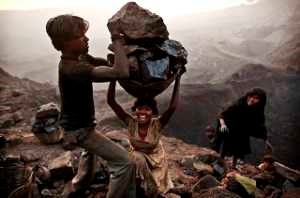Saying No to Child Labor
By Oana Grigorita on June 12, 2014
On June 12th, we celebrate World Day Against Child Labor by providing awareness of children’s right to be protected from the worst forms of child labor and from other violations of fundamental human rights.
There are approximately 168 million children engaged in exploitative child labor around the world. More than half are working in hazardous environments, such as mines or factories, or working with dangerous substances, such as chemicals. In addition to being exploited, many of these children are often being denied education, basic health care, adequate nutrition, leisure time, and the safety and security of families and communities. Nearly 30 percent of people in poor countries earn less than one dollar a day and often have to depend on their children’s earnings.
Three years ago, I took a trip to New Delhi where I witnessed the real meaning of every day survival. I must confess, it was a pretty cruel reality. During one excursion, we drove along 200 miles of slums where people lived in extreme poverty. I didn’t see any paved roads, access to healthcare, or drinkable water. I saw children 6-10 years of age trying to sell goods on the street—everything from souvenirs, bottles of water, or food to earn whatever money they could to survive and to augment their desperately low family income. I don’t think it was an option for these children to work but rather a necessity.
I believe that expanding access to free, mandatory, and quality education is important for reducing child labor in order to equip children with relevant skills. Children who receive a high-quality education are more empowered to escape poverty and are more likely to send their children to school as adults.
Many organizations around the world are working to address this important issue. For example, the International Programme on the Elimination of Child Labour (IPEC) has demonstrated leadership in using education to combat child labor in both formal and non-formal settings, which has proven to prevent child labor and rehabilitate former child workers. WI-HER continuously advocates for the rights of boys and girls in their gender integration efforts on the USAID Applying Science to Strengthen and Improve Systems (ASSIST) Project, with particular focus on orphans and vulnerable children. Based on the tireless work of international and community-based organizations, some children are getting a better life due to increased access to education in poor countries. This is demonstrated in the following story.
Manan Ansari is 14 years old and comes from Samsahiriya, a village in the state of Jharkhand. He began working in a mica mine at the age of eight in the district of Koderma, one of the poorest in the state.
For Manan a working day would begin at 10 am and last until 6 pm. Some of the ore can be found on the surface but a good deal has to be dug out of the bowels of the earth through tunnels. In the past some tunnels have collapsed killing miners. The day’s haul would then be sold to agents, the price varying according to the quality. A kilo of ore could sell for as low as 4-8 rupees or as a high as 20 rupees (US$ 0.40).
Manan’s story is like that of many other children in his village; like theirs but not the same as their because he is able to talk about it in the past thanks to the action of an Indian NGO, the Bachpan Bachao Andolan (BBA), which convinced his parents to take boy out of the mine and put him into a rehabilitation centre in Jaipur to study.
Since then he has been on a mission to defend children’s rights. Whenever he visited his family, he tried to convince other families to let their children go to school instead of the mine. So far eight did. (http://www.ilo.org/global/topics/child-labour/)
As International Labor Organization Director Juan Somavia said, “A world without child labour is possible with the right priorities and policies: quality education, opportunities for young people, decent work for parents, a basic social protection floor for all.”
